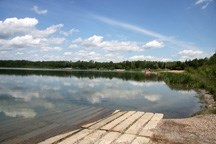The Energy Resources Conservation Board (ERCB) approved CNRL’s application to drill 15 crude bitumen wells from eight pads near Minnie Lake in a decision released on June 28.
The 25-page decision included four conditions after the three-day hearing held in March, which brought CNRL and project opponents to the Glendon Seniors Centre.
Although pleased with some of the conditions, the Minnie Lake Conservation Society (MLCS) is considering appealing the decision through the ERCB or to the Alberta Court of Appeal and plans to seek legal counsel.
“We just do not feel satisfied that this is indeed in the public interest,” said spokeswoman Coralee Beaulieu last week, in contrast to the three-man ERCB panel that decided after weighing evidence “the proposed wells are in the public interest.”
MLCS could file a “review in variance” to ask the ERCB to review or vary its decision, said ERCB spokesman Bob Curran, in a phone interview. To be considered, there would have to be new evidence that has come to light, or the society would have to prove the board had erred in law or jurisdiction.
“We’re pleased with the decision. We’re going to carry on and get the rest of our paperwork in order and proceed on this program,” CNRL spokesman Steve Lepp said.
One condition requires CNRL to conduct cement evaluation logs of the surface casing in each well after drilling to total depth, one of the society’s main requests.
“We were really pleased that that condition was put in and that the logs have to go to the ERCB,” said Beaulieu.
“The one that was above and beyond what we had committed to throughout the hearing was running the cement (evaluation) logs,” said Lepp. “We still don’t believe it’s necessary, but we aren’t surprised that that was one of the conditions.”
Another condition requires surface casing to 440 metres above sea level, which CNRL expected and had committed to already. The last condition requires CNRL to refrain from drilling between June 1 and Sept. 5, which CNRL had also committed to before the hearing.
Emissions opinions
CNRL and MLCS presented different views of the possibility of negative health effects from hydrocarbon emissions from heated bitumen storage tanks at the hearing. Beaulieu said she was shocked the ERCB decision did not require a condition related to minimizing or eliminating toxic hydrocarbon gases from the tanks.
“It’s a pretty deep concern. It’s beyond disappointment,” she said. “There’s been information for years now that these are occurring.”
Glendon area resident Sally Ulfsten told the hearing she had experienced negative health effects from living 100 metres from a heated tank.
“As citizens we don’t believe it’s adequate now that the information’s been out there and confirmed again in our hearing that those are toxic compounds and they’re being released,” said Beaulieu.
She said the solution to the emissions could be inexpensive.
During the hearing, CNRL presented testimony indicating levels of toxins emitted do not present a health risk. Dr. Donald Davies, executive director of Intrinsik Environmental Sciences Inc., said the project would not have negative health impacts.
The level of emissions measured in an Alberta Environment study of heated bitumen storage tanks would not be enough to cause adverse health effects, Davies said. The effect of a chemical depends on the level and frequency of exposure, he said.
Amy Colquhoun from Alberta Health Services gave a presentation on a regional statistical cancer study for MLCS. Colquhoun recommended monitoring, but said there is no cause for concern.
The ERCB panel noted another report presented by MLCS “failed to assess the potential health effects of those emissions on MLCS and other residents in the area … the panel did not find the Coppock report useful in reaching its decision.”
The panel “accepts and relies upon Dr. Davies’s evidence … that it is highly unlikely that area residents would experience harmful health effects.”
Costs to be determined
The hearing and CNRL’s eight-person panel came with a “significant cost” to the company, according to Lepp, who declined to provide the amount. CNRL could also be on the hook for the society’s costs, a decision the ERCB has yet to make.
“It’s part of the process. It’s unfortunate we ended up there but there are situations that warrant that,” said Lepp on the costs of the hearing to CNRL.
The Minnie Lake Conservation Society (MLCS) had gained intervener status from the board to gather evidence for the hearing and can file for costs. Beaulieu estimated the society’s costs to hire witnesses at around $60,000, who billed by the hour for research conducted prior to the hearing and costs incurred to get to Glendon. The witnesses did not charge the full amount permitted by the ERCB and were fair in what they asked for, she added.
While the ERCB could order CNRL to pay, it could also pay itself or decide MLCS should pay its own costs.
Parties involved submit cost claims to the ERCB after the hearing. The ERCB assesses it and will issue a cost order to the company to pay the cost the ERCB deems appropriate according to a cost guide, explained Curran. The cost order will be released online when completed.
ERCB guidelines indicate expert witnesses should provide relevant evidence to the application and should add value and assist the board in making an informed decision, factors considered in the cost order.
The decision indicates the board did not feel MLCS witness Gilles Wendling provided valuable testimony. Wendling admitted he had little experience in the oil and gas sector. The panel concluded he put forward opinions on subjects outside his main area of professional expertise and gave inapplicable and irrelevant testimony.
The ERCB picks up the costs of the hall rental and its own staff, which comes under its operational budget.



